1/72 Revell SR-71 Blackbird
In May of 1960, Francis Gary Powers' U-2 spy plane was shot down over the Soviet Union by an S-75 Dvina surface-to-air missile. This incident starkly revealed the vulnerability of U.S. aerial reconnaissance to Soviet air defenses, and sparked the drive for spy planes that could fly higher and faster than any conceivable defensive capability. Led by Lockheed's secretive Skunk Works, this project culminated in 1964 with the SR-71 in its final form.
The Lockheed SR-71 Blackbird was a reconnaissance aircraft for the US Air Force from 1964 until 1998. Its general bad-assery is widely accepted by both aviation enthusiasts and laypersons alike. Derived from the CIA's A-12, the SR-71 (SR = strategic reconnaissance) supported operational and strategic missions in Vietnam and the USSR during the height of the Cold War. It remains the fastest aircraft, at Mach 3.5, to ever achieve operational status. And with a maximum altitude of 85,000 feet and even a bit of stealth capability, it was a highly elusive target.
One need merely spend a couple minutes on the wikipedia page to learn something worthy of date night conversation. What I am struck by is the technological ingenuity, not just of the aircraft, but of the whole manufacturing process that went into to creating it. First, though, the operational requirements: the US Air Force wanted an effectively invulnerable reconnaissance aircraft. Beyond electronic countermeasures, the SR-71 was defenseless. But, its moderate radar cross-section (owing to early stealth technology) made it harder to spot with ground-based radar: by the time a SAM was launched, the SR-71 would be hauling out of range at a blistering pace. It could outrun all air-to-air munitions at the time, as well as the fastest MiG interceptors. No SR-71s were ever lost to hostile activity.
Efforts at inclining the craft to stealth saw the introduction of chines — the tapered edges along the fuselage running from the nose aft — that make the craft look like its melting on a hot plate. These serve to flatten the bottom of the aircraft which helps deflect radar away from its source. As a welcome side effect, the chines were found to provide aerodynamic lift which allowed the angle of the delta wings to be reduced, improving stability and efficiency. These chines ended up being the defining visual characteristic of the SR-71, garnering the nickname “Habu” in Okinawa after the Japanese pit viper it resembles.
Many engineering challenges stemmed from the fact that the SR-71 was going to get really hot up there: upwards of 500 degrees F on its outer surfaces. The body would be made of an alloy containing a majority titanium to resist high temperatures, but titanium was hard to come by. Most of its raw ore originated in, you guessed it, the Soviet Union. In an ironic twist, the US sourced this Soviet titanium through intermediaries and other indirect means, so that it could be used to build spy planes directed against the Soviet Union. Even still, the high temperatures would cause the skin of the aircraft to wrinkle and warp, and so the surfaces of the wings was corrugated to allow the skin to harmlessly expand. The characteristic red markings around the center of the corrugated fuselage warned workers not to step on the thin skin there. Another interesting quirk related to thermal expansion: the aircraft's parts were designed to fit snug only at speed (and high temperature), and thus gaps of several inches existed on the cold aircraft which allowed fuel to leak out. In several of the more famous photos of the Blackbird, leaking fuel can be seen streaking back along the fuselage.
And not just the outside of the plane got hot. Inside the quartz-canopied cockpit, temperatures exceeded 200 degrees F and so a dedicated cooling system was needed to prevent pilots from slow cooking. Tires were infused with aluminum powder to withstand the high temperatures of flight and friction from high-speed landings (the SR-71 needed a drag chute to slow after landing), and were filled with nitrogen to resist thermal expansion.
Finally, the funnest SR-71 fact: the two Prat & Whitney J75 engines needed an external power source to start (since they could only self-sustain if the turbine was already spinning quite fast). For this purpose, they used two Buick Wildcat V8 engines. I find this juxtaposition of the clunky, pedestrian automobile and the space-age spy plane simply delightful.
As weaknesses go, the SR-71 was expensive to maintain. Aircraft would frequently return from missions with missing rivets and delaminated panels, requiring days of rehab before the aircraft was flight-worthy again. Operationally, its most stringent limitation was the lack of a real-time data relay, and so commanders would need to await the plane's return before any intelligence could be operationalized. These issues and others led to its retirement in 1998 after a phenomenal service career.
The Kit
The 1/72-scale Revell SR-71A Blackbird has 66 parts in black styrene. Panel lines are raised, but the corrugation and vents are engraved. The cockpit and wheel wells have decent detail. The fuselage comes in two large pieces: top and bottom, with the seam running about half a cm from the edge on the bottom. This is a pain because if you wish to fill it, you'll need to work around the raised panel lines that run across the seam; ideally, this seam would have coincided with the edge of the aircraft. The nozzles have nice detail and these parts are accessible for easy painting. The canopy is mostly black styrene, with only the front ‘windshield' clear and so requiring paint. There is some annoying sprue runner placement, like this canopy:
which ultimately deforms the part, requiring repair. And, Revell felt the need to mold licensing information directly onto the outside of the model. Twice, actually.
The kit has a choice of tail art: the “Rapid Rabbit” and the Skunk Works logo: both are great choices but I'm not sure of the accuracy of the first, as online photographs show the Rapid Rabbit with a slightly different profile.
The decals are thin but not too delicate, though the long red stripes split in places with zero coaxing from me; this in fact probably helped as it's easier to emplace multiple smaller decals than one long flaccid one.
Overall, this is a fairly easy kit to assemble without many frills. The challenge lies in making a black plane look interesting.
I decided to try a two-tone base coat: Tamiya XF-1 (Flat Black) and Tamiya XF-69 (NATO Black). I applied a full coat of XF-1 and then highlighted the panel centers and other areas with the XF-69. Here it is after a gloss coat:
Next, I wanted to create the faded, dusty look seen in photographs like this one:
Starting with the fuselage, I applied some Abteilung 502 Light Gray in small dots along the top panel line. Using a flat-edged brush I blended downwards towards the chine:
It's tough to know when enough is enough. I also applied some Tamiya Weathering Master gray pigment to some of the raised panel lines:
To make the question of when enough is enough even more complicated, once I hit the model with some dull coat, most of the weathering disappeared!
This was a good lesson learned. To recover some of the lost weathering after the final dull coat, rather than mess with oils I brushed on some pigments, and tried to create a streaking effect by cleaning it off with a Q-tip dipped in water. This mostly worked though I observed that the pigments, though only a powder that sits on the surface of the model, can be a bit stubborn and hard to remove.
Having read that the tires have aluminum in them and actually exhibit a metallic sheen, I figured I might as well try to recreate this quirk of the SR-71. Here's a still from a video about the tires:
I lightly sprayed some Alclad Dull Aluminum and then touched it up with Tamiya XF-85 (Rubber Black) and brown to simulate wear.
That's all for now! Thanks for reading.

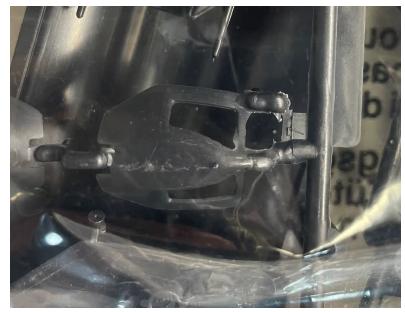
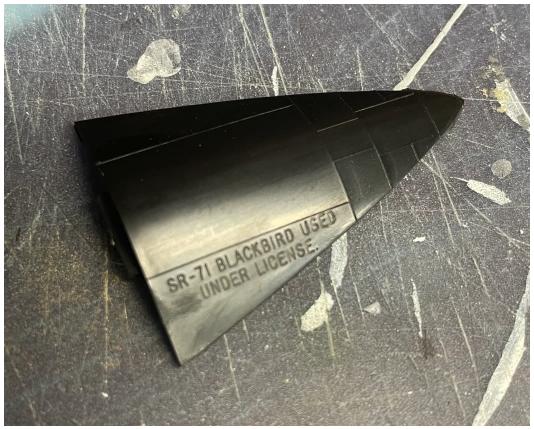


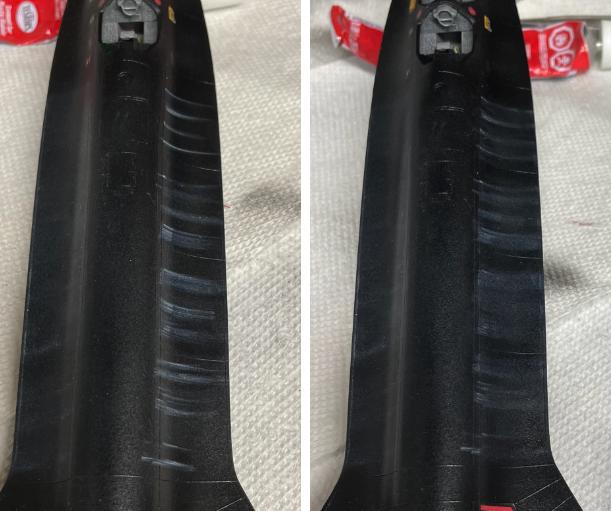
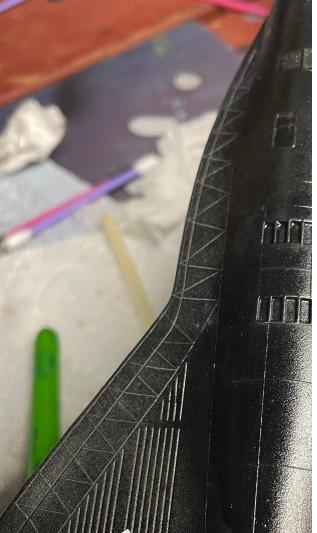
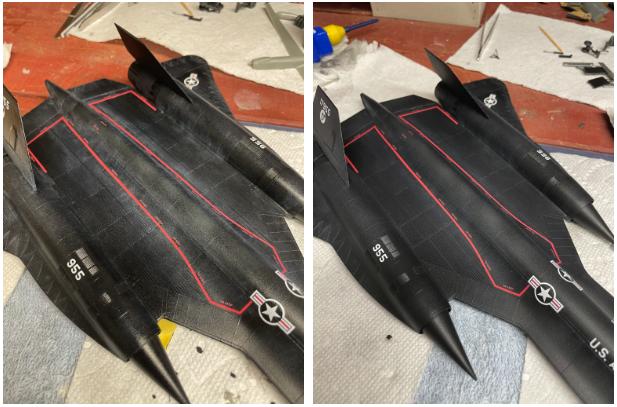
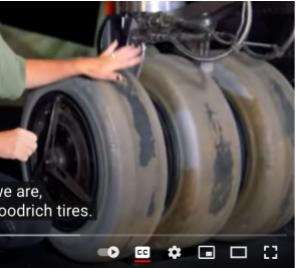

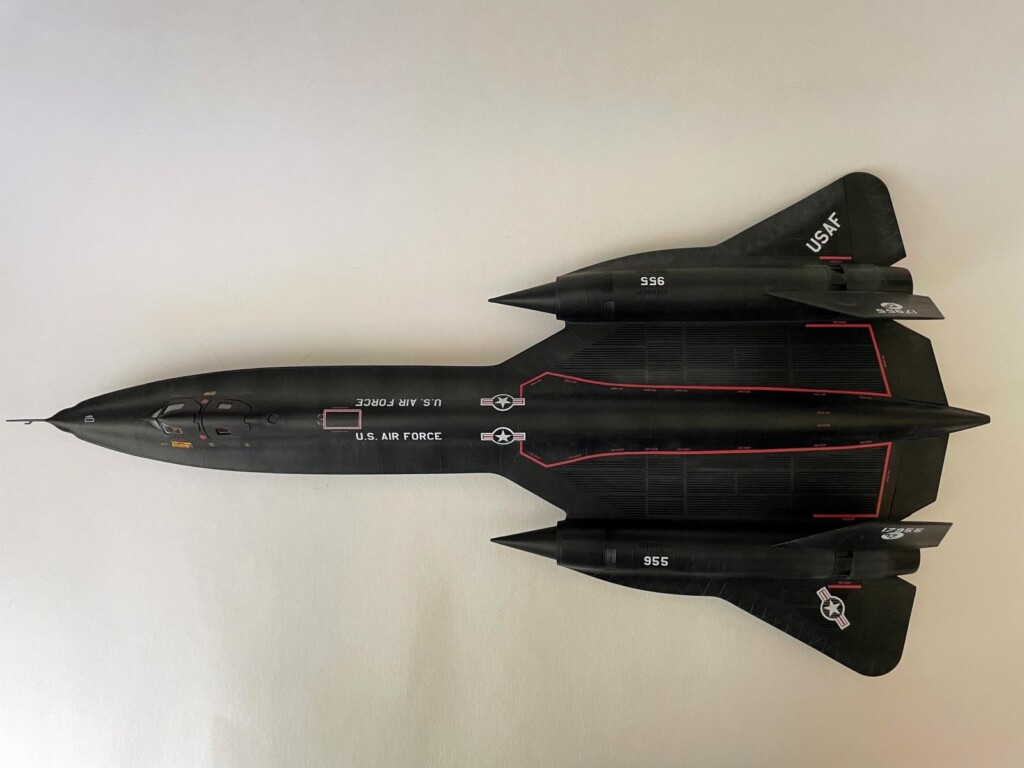
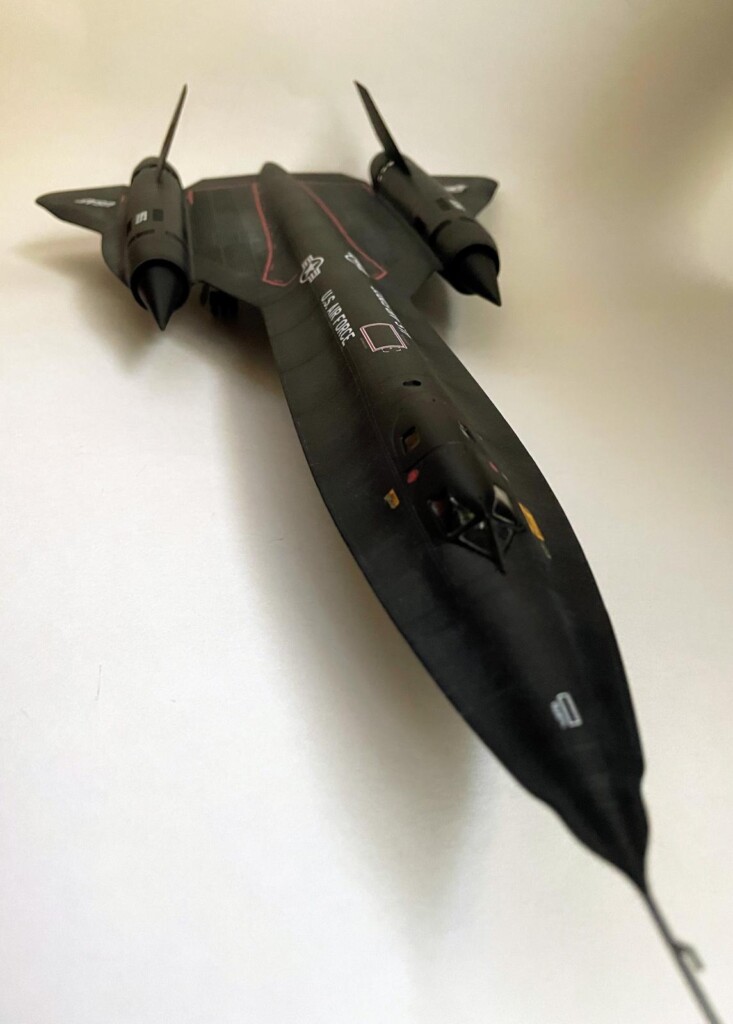
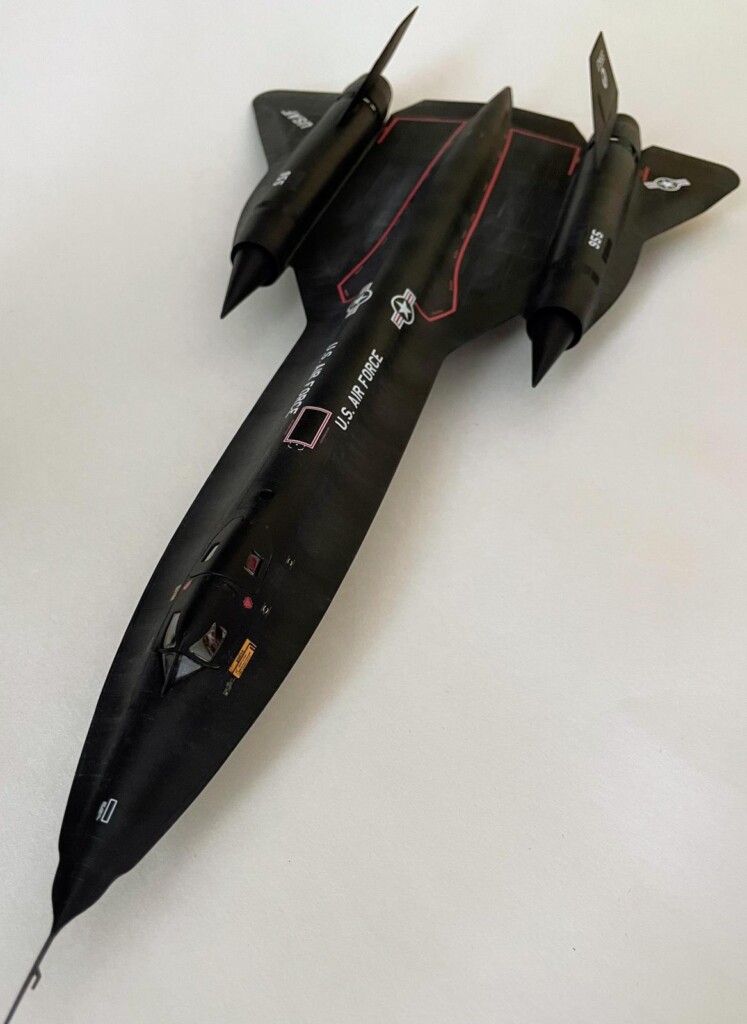
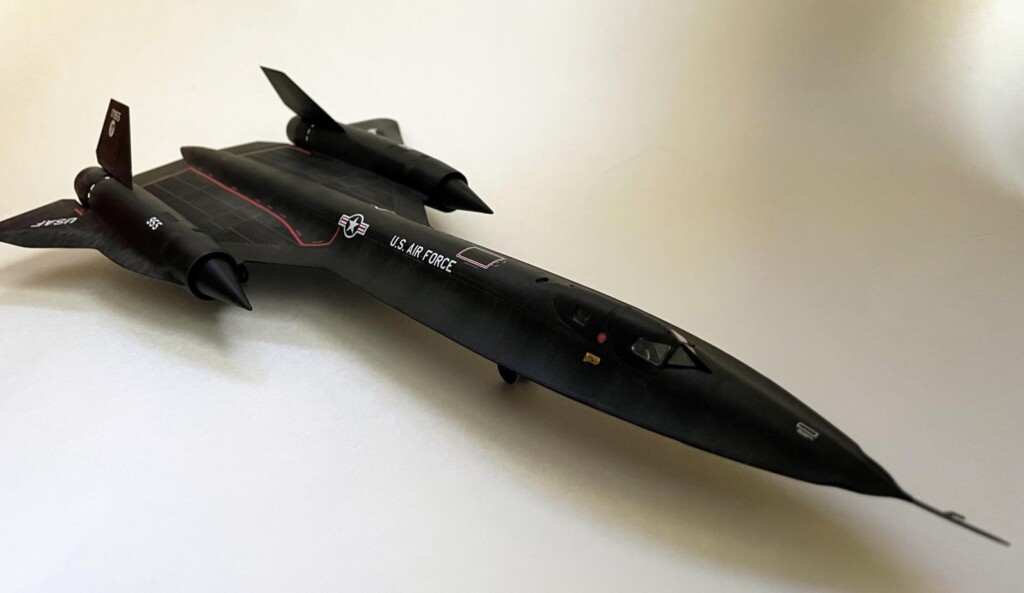
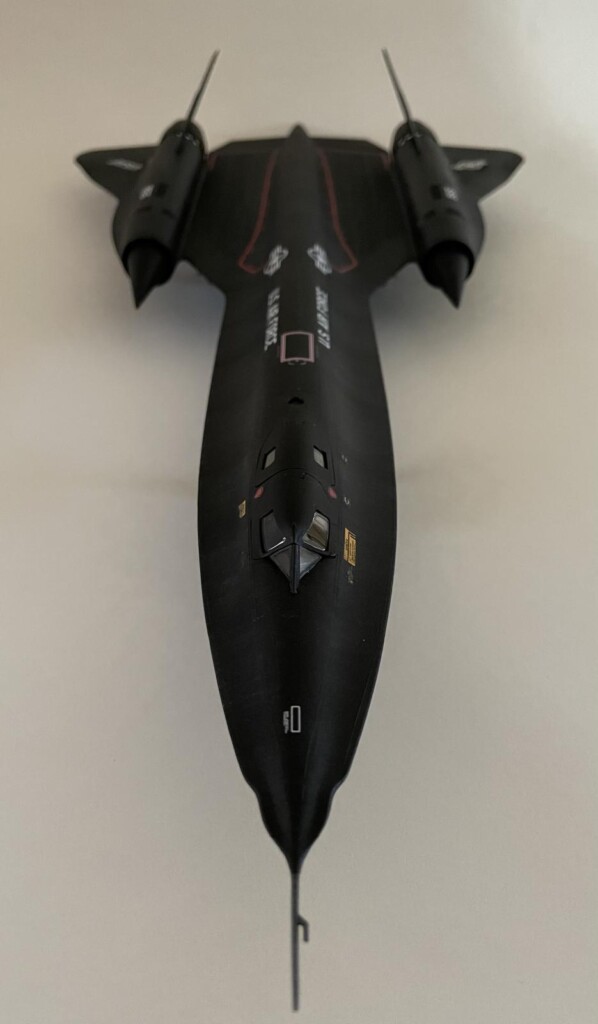

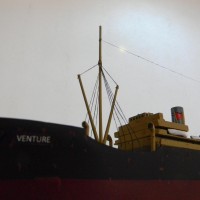
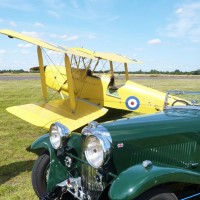

An amazing result over the challenging Revell kit, Brian! Love the painting and weathering! The supporting article is amazing, as well!
Congratulations!
Thank you Spiros!
You defintely succeeded in making this build look interesting, Brian @bapowellphys
The beautiful painting and weathering is absolutely the reason behind that.
Great article as well about the hostory and the build itself.
Well done.
Thanks John!
Nice work. That is one long model.
It is, but considerably more manageable than the 1/48 scale!
Fantastic work on this, Brian, especially the paint work. Liked!
Thanks Andrew!
The -71 is a fascinating aircraft, with somewhat unique paint/weathering challenges. I've seen myriad articles on ways to achieve a realistic finish, and you found your way to a pretty good rendition! Well done!
Thanks Greg! Yeah, working with black aircraft is a whole different ball game. I'm not there yet, I know, but I've got some time to improve before I tackle the Dragon Lady sometime next year!
Terrific article, thanks for sharing it with us, I especially liked your treatment on the tyres.
Yes, a great article to accompany your well done sled. You nailed the black perfectly. I assume this is the new tool Revell and not the old one although I can’t remember what scale that one was.
An impressive build looks great! Many moons ago I built the YF-12 Interceptor version.